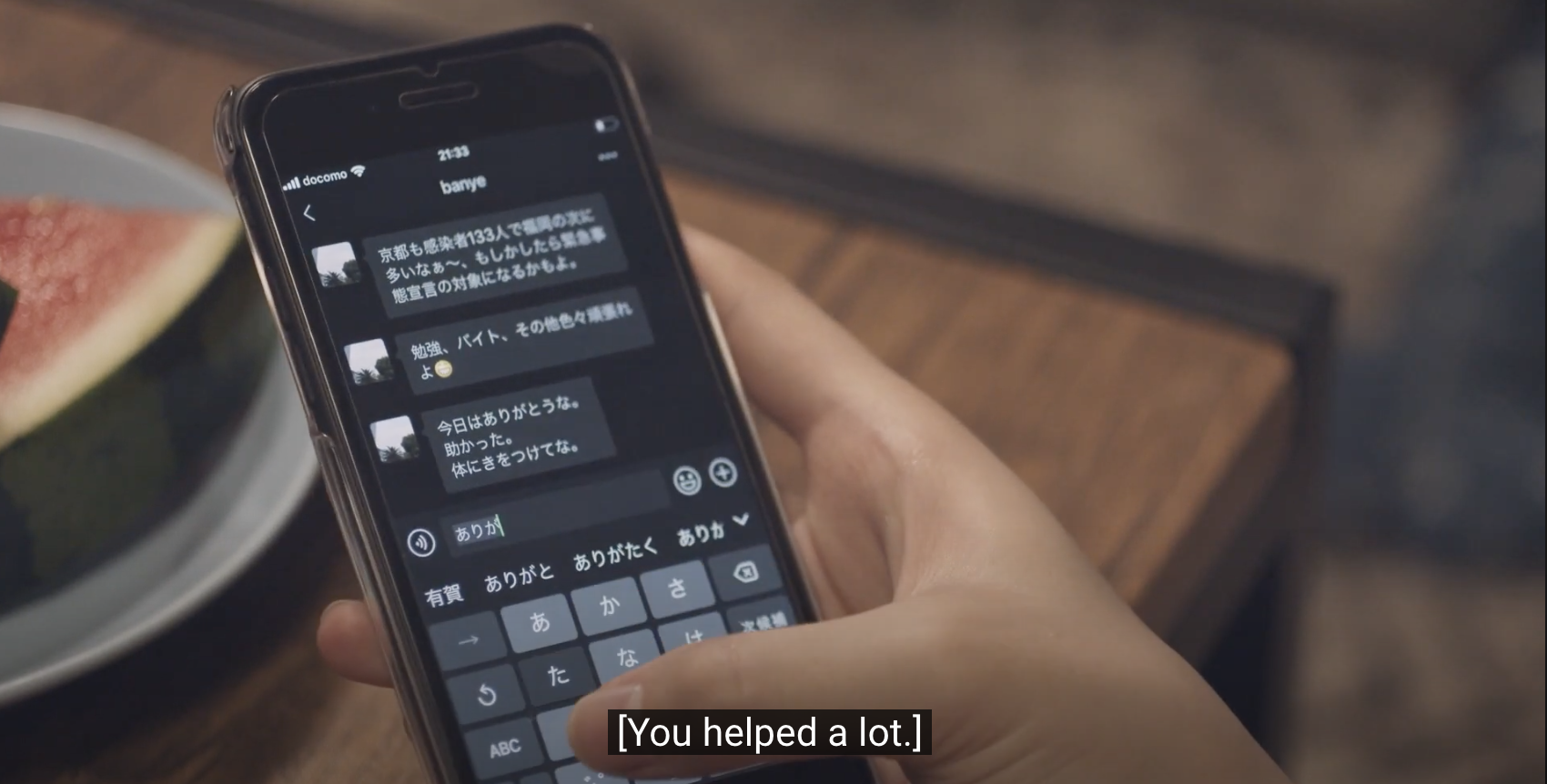Advice for students who are interested in translating videos
Caitlin: Japanese and English grammar patterns and speech styles can be very different and I think it’s important to remember that it’s more important to convey the feeling and emotion properly than to remain faithful to the exact wording.
Kerry: Translation can be daunting when you have a long, complicated transcript or text in front of you, but it becomes a lot easier if you break it up into manageable chunks. Of course, it is important to understand the overall meaning of the source text and put each sentence into the context of the sentences around it, but you can always edit along the way. Another important technique for translation is to have multiple drafts (ideally, at least 3) and focus on different goals for each draft. I often make a really rough first draft, where I try to translate pretty literally, and then make it more smooth/natural sounding in the second and third drafts.
Ray: Translating videos is different from translating articles/books. Readers can manage their reading time and speed the ways they are used to. However, when watching a video in a foreign language, audiences are supposed to enjoy the video as well as understanding the translation within a limited time. Therefore, when translating the video, translators should make sure that their subtitles are short but effective, giving audiences enough time to watch, listen, and read.
Sarah: As opposed to written text, I think that in translating a video paying attention to tone is particularly important. If the tone of the translation deviates from that of the video, the two may feel dissonant. Assuming that someone will be viewing your translated video, multiple translations and consultation/discussion with other translators to reach the most effective and accurate translation.
Eika: Although translating someone else’s work may seem like a big task to take on, taking it step by step and thinking about different perspectives is very important. Whether it be the English speaking audience, the Japanese speaking audience, a fellow translator, or the original creator of the video. Whatever you think would accurately portray the original message best to them should be your top choice. By switching perspectives, little details, even one word in the whole sentence can be changed to more accurately portray the story.
Ayumi: Translation in any form requires taking a lot into consideration, but videos particularly need strong, clear subtitles so as not to detract from the viewer’s experience of the piece. This can feel like a frighteningly big task at first, but I think the best place to start was connecting with the current of the story/narrative of the video and gaining a good sense of what it is trying to convey to the audience. Asking, for example, what the “heart” of the video is can be a very rich beginning point, and can guide you even in the most minute word changes you make. I think it is very important, as much as possible, to make subtitles you yourself would enjoy reading on a video in a language you couldn’t understand – and to find joy in the translation process, if you’re able to!
Quinn: Work in stages and consult with multiple people throughout the translation process. Translating a video is a big task, and because it requires transcribing and you’re often dealing with multiple characters’ personalities and voices, I think in many ways it requires more dynamism than just translating an article. Additionally, translation is all about perspective—yours, the characters’, the audience’s—so getting a different viewpoint on the same text, whether that text is a subtitle or a book, is critical.
Yena: Translating the culture and norms is also very important. Rather than directly translating from another language, it is important to consider the meaning behind what is being said/written, or the overall feeling of something. These are more important than translating the words. I think it is alright to choose a different word or expression in a language that might have slight differences with the original language, but fit better (or is more often used/well understood) in the culture and norm in the culture that one is translating to.



